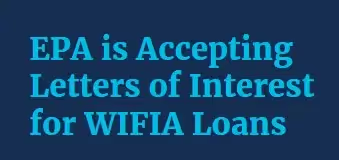In September 2024, the U.S. Environmental Protection Agency (EPA) announced the launch of a $7.5 billion fund under its Water Infrastructure Finance and Innovation Act (WIFIA) program, aiming to transform the nation’s water infrastructure. The fund is set to address the pressing needs of aging water systems, promote sustainability, and ensure access to clean water. The importance of robust water infrastructure cannot be overstated, as it directly impacts public health, environmental protection, and economic stability.

The Significance of Water and Sewer Infrastructure
Water infrastructure in the U.S. is comprised of a vast network of pipes, treatment plants, storage facilities, and other elements responsible for delivering safe drinking water and managing wastewater. Estimates put the labyrinth of water lines crisscrossing the nation at 2.2 million miles. Much of this infrastructure is decades old, with some systems exceeding a century in service. Aging pipes, frequent leaks, and outdated treatment facilities have led to water contamination and service disruptions, posing risks to public health and safety.
One of the most significant public health risks is related to drinking water contamination. Lead and other pollutants can infiltrate drinking water due to corroded pipes and inadequate treatment processes. Sewer systems also face challenges, as leaks and overflows result in untreated wastewater seeping into rivers and lakes, causing pollution that harms aquatic life and human health.
These concerns highlight the urgency of investing in water infrastructure upgrades, which not only protect public health but also conserve water resources and prevent costly emergency repairs.
How Does WIFIA Address Water Infrastructure Needs?
The WIFIA program, initially established in 2014, offers low-interest loans to help communities finance large-scale water infrastructure projects. The new $7.5 billion fund will play a pivotal role in supporting various projects, including drinking water and wastewater treatment, stormwater management, and water recycling.

This fund is particularly timely, as many local governments struggle to secure the necessary resources to replace outdated infrastructure. By leveraging federal loans, communities can undertake projects they would otherwise be unable to afford. Moreover, WIFIA loans often cover up to 49% of project costs, making them a powerful tool for municipalities to bridge the funding gap

The broader economic benefits of these investments include job creation, as infrastructure projects employ local workers and stimulate related industries. Additionally, improved water systems reduce operational costs by minimizing leaks and system failures, ultimately lowering water rates for consumers.
GPRS: Enhancing Infrastructure with Leak Detection and Video Pipe Inspection Services
Maintaining water infrastructure requires not only construction and upgrades but also ongoing monitoring to detect problems before they escalate. GPRS, the nation’s largest company in subsurface investigation, offers essential services such as leak detection and video pipe inspection, which play a critical role in preserving water and sewer systems.
Leak Detection
Water loss due to leaks is a significant issue in aging water systems. On average, utilities lose about 14% of their water annually, with some systems reporting losses of up to 30%. GPRS’s pinpoint leak detection services use advanced acoustic and leak correlation technology to pinpoint leaks quickly and accurately. This proactive approach helps municipalities and utilities conserve water, reduce operational costs, and prevent structural damage caused by undetected leaks.

By identifying and repairing leaks early, communities can extend the life of their water infrastructure and avoid costly emergency repairs. Furthermore, reducing water loss is critical in regions experiencing water scarcity, ensuring that this vital resource is preserved for future generations.
Video Pipe Inspection
In addition to leak detection, GPRS offers video pipe inspection services to assess the condition of pipes and detect potential issues such as blockages, cracks, or corrosion. This technology involves inserting high-resolution cameras into pipes to provide real-time visuals, allowing for precise identification of problem areas.

Video inspections are invaluable for both preventive maintenance and targeted repairs. They provide a detailed view of the internal condition of pipes, helping utilities prioritize repairs based on the severity of the issue. This data-driven approach enables more efficient use of resources, reducing the likelihood of system failures and service interruptions.
For municipalities considering WIFIA-funded projects, GPRS’s services complement infrastructure upgrades by ensuring that existing systems are properly maintained and any underlying issues are addressed. By combining advanced monitoring techniques with infrastructure improvements, communities can achieve more sustainable and resilient water systems.
Leak detection and video pipe inspection services are crucial in extending the life of new and existing infrastructure. By detecting problems early and addressing them before they worsen, these services help prevent water loss, reduce repair costs, and ensure the reliability of water systems. This proactive maintenance approach aligns perfectly with the goals of the WIFIA program, which seeks to build resilient water infrastructure for the future.
As the country faces increasing challenges from climate change, population growth, and aging infrastructure, investing in water systems is no longer an option but a necessity. The WIFIA fund provides a critical lifeline to communities in need of financial support, while GPRS’s cutting-edge services offer the technical expertise required to maintain these systems effectively. Together, these efforts ensure that clean, safe, and reliable water services are available to all Americans, now and in the years to come.
The EPA’s $7.5 billion WIFIA fund is a bold and necessary investment in the future of America’s water infrastructure. As municipalities take advantage of this financing to improve water and sewer systems, companies like GPRS will play an essential role in ensuring these projects are built to last. GPRS Intelligently Visualizes The Built World® to help safeguard water resources and extend the longevity of critical infrastructure, contributing to a healthier, more sustainable future for all.
What can we help you visualize?
GPRS sponsors Water & Sewer Damage Awareness Week (WSDAW) – an education and safety initiative for water and wastewater professionals in municipalities, organizations, and large facilities. The 2024 event is October 21-25, and you can register for your free WSDAW talk by clicking below.

